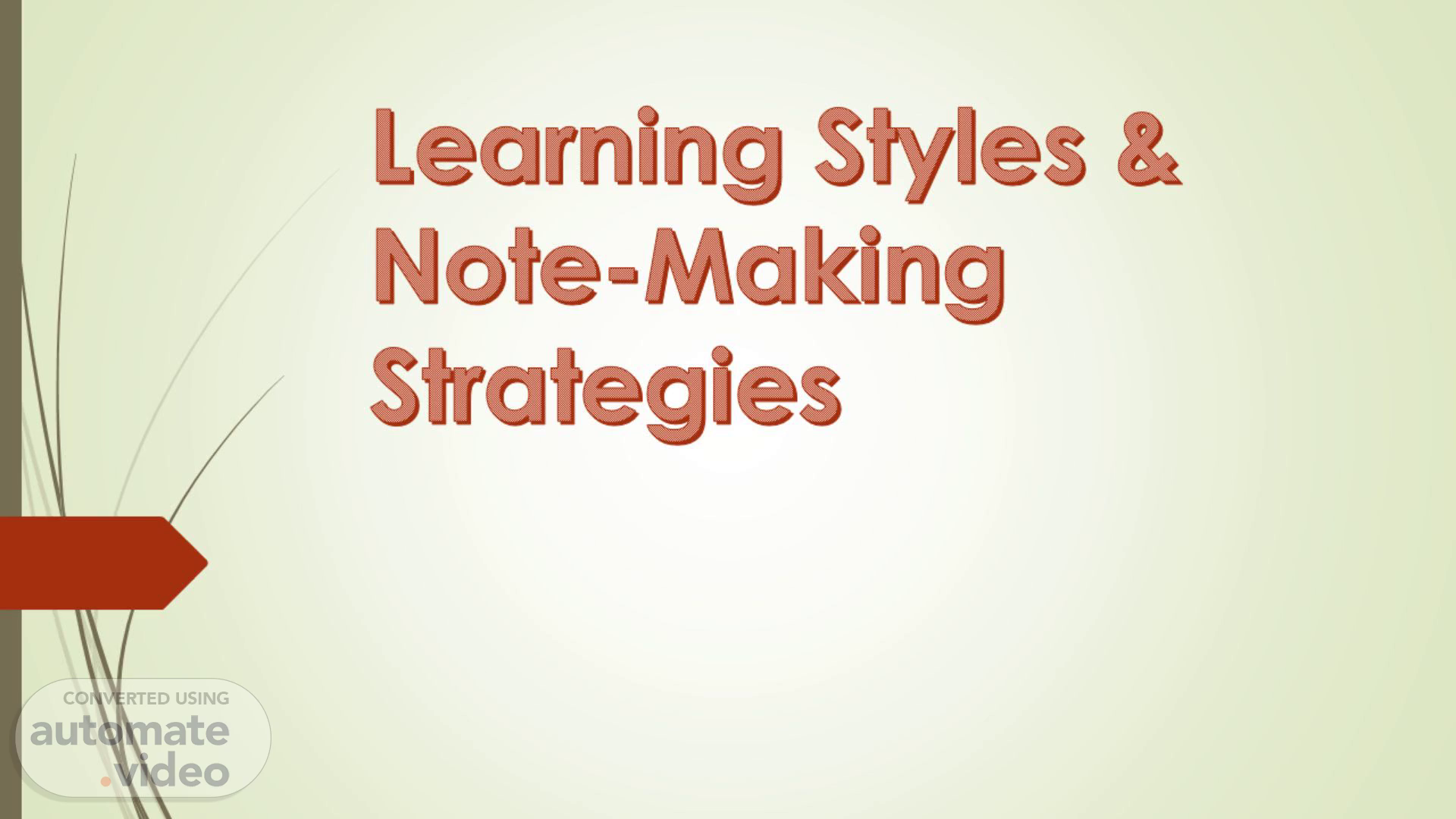Scene 1 (0s)
Learning Styles & Note-Making Strategies. The VARK Model.
Scene 2 (10s)
The Four Learning Styles. VARK: Different Ways Our Brain Processes Information VISUAL - Learn through seeing images, colors, diagrams, and spatial arrangements AUDITORY - Learn through hearing sounds, music, discussions, and verbal explanations READING/WRITING - Learn through written words, texts, lists, and detailed notes KINESTHETIC - Learn through physical activity, hands-on experiences, and movement.
Scene 3 (29s)
Visual Learners. Who Are Visual Learners? Visual learners prefer to see and observe things to understand them. They think in pictures and learn best when information is presented graphically. They excel at visualizing concepts and often say "I see what you mean." Note-Making Strategies Mind Maps - Create colorful branching diagrams with the main idea in the center and related concepts radiating outward Color Coding - Use different colors for different topics, priorities, or categories to organize information visually Flowcharts - Create visual process maps with arrows, shapes, and connections showing relationships Diagrams & Sketches- Draw concepts, ideas, and processes instead of writing lengthy descriptions Highlighting - Use multiple highlighter colors to categorize and emphasize important information Infographics - Combine text with icons, images, and visual elements for comprehensive understanding.
Scene 4 (1m 1s)
Auditory Learners. Who Are Auditory Learners? Auditory learners learn best through listening and speaking. They prefer verbal instructions, discussions, and explanations. They often talk to themselves while learning and remember information better when they hear it.Note-Making Strategies Note-Making Strategies Record Lectures - Use voice recording apps to capture lectures and discussions, then listen repeatedly for review Read Aloud - Verbalize your notes and study materials by reading them out loud to yourself Mnemonic Devices - Create rhymes, songs, acronyms, and verbal memory aids to remember information Discussion Notes- Write down key points from study group discussions and verbal explanations Q&A Format - Structure notes as questions and answers to facilitate verbal review sessions Verbal Summaries - Dictate summaries into recordings or explain concepts aloud to solidify understanding.
Scene 5 (1m 34s)
Reading/Writing Learners. Who Are Reading/Writing Learners? Reading/Writing learners excel with written words in all forms. They prefer reading textbooks, writing essays, and taking detailed notes. They learn best through reading and writing activities and love lists, definitions, and text-based information. Note-Making Strategies Cornell Method - Divide pages into cue column, notes section, and summary area for structured organization Detailed Outlines - Create hierarchical structures with main topics, subtopics, and supporting details Comprehensive Lists - Organize information into detailed bullet-point lists and numbered sequences Rewriting Notes - Copy and rewrite notes multiple times to reinforce learning through repetition Written Summaries - Create paragraph-form summaries after each study session or chapter Text-Heavy Notes - Write full sentences and detailed descriptions rather than brief keywords.
Scene 6 (2m 7s)
Kinesthetic Learners. Who Are Kinesthetic Learners? Kinesthetic learners learn by doing and experiencing. They prefer hands-on activities, movement, and practical applications. They need to touch, feel, and actively engage with materials to understand concepts fully. Note-Making Strategies Walk While Studying - Take notes while walking or moving around to engage your body in the learning process Flashcards - Create physical flashcards that you can shuffle, sort, and manipulate with your hands Post-it Notes - Use sticky notes that can be moved, rearranged, and organized on walls or boards Physical Models - Build 3D models, diagrams, or representations of concepts using hands-on materials.
Scene 7 (2m 35s)
-Thank you-. Effective learning is not one-size-fits-all. Embrace your unique learning style and optimize your note-making!.
